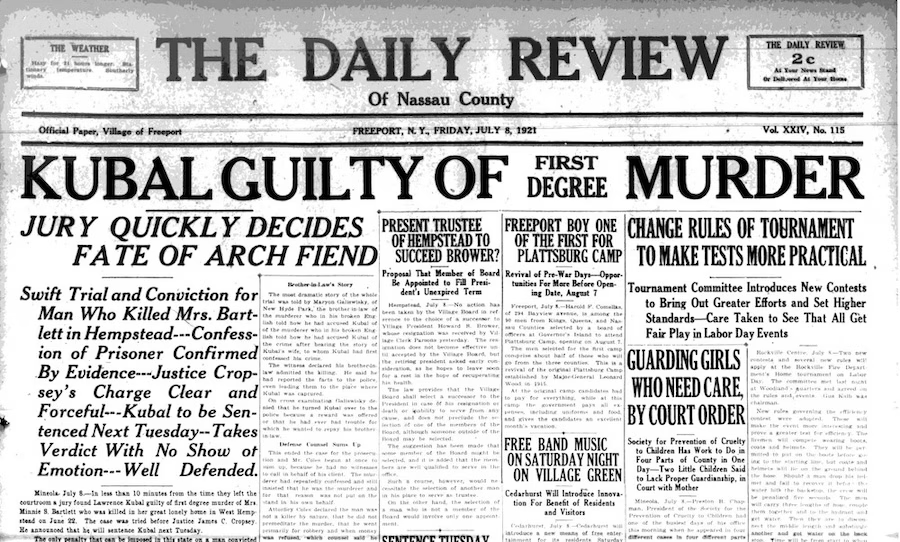In a courtroom packed to the brim with spectators, Justice Cropsey’s warning cut through the murmur of anticipation like a knife. The women in attendance, numbering over a hundred, were sternly advised to leave—deemed too delicate to endure the grisly confession about to unfold. Yet, their departure was anything but voluntary. Some lingered outside the windows, straining to hear the horrific details of a crime that had shocked the community to its core.
What followed was the chilling tale of Lawrence Kubal, a man accused of committing what newspapers called “the most brutal murder in Nassau County’s history.” The victim, a lonely widow named Mrs. Minnie S. Bartlett, met a tragic and gruesome end in her West Hempstead home on a quiet summer afternoon in 1920.
This is the story of greed, betrayal, and justice served in swift, unrelenting fashion—a case that gripped Long Island and ended with one man’s reckoning in the electric chair.
When the murder suspect confessed in a Mineola courtroom the women were banished from hearing the man’s testimony. The justice in the case warned them that it would be unfit for their delicate ears to hear the horrid details. Over 100 women had packed the court to witness the trial.
“I would advise all of you women to leave this courtroom before trial begins,” said Justice Cropsey, overseeing the case. “The testimony to be submitted here is not of the kind I believe you should hear.”
With that, the women filed out but some were seen lingering around the windows of the court eavesdropping as the confession of Lawrence Kubal was read. They were there in support of the victim, a lonely widow, brutally murdered.
Kubal was accused of murdering Mrs. Minnie S. Bartlett, who was at her home in West Hempstead on the afternoon July 22, 1920. The murder was described in the papers as “the most brutal in the history of Nassau County.”
Kubal, 36, it seemed, hit Bartlett with a chisel and stole her jewelry, which he tried to pawn. He hatched a plan to rob her after hearing she was a rich woman from two young boys as he was passing by the house the day before. Posing as a potential buyer for her home (Bartlett was selling her house), Kubal then demanded money. When Bartlett refused to hand over the cash, Kubal killed her.
The unfortunate victim’s relative (reports differ on who it was that found her) discovered her mutilated body in the dining room of her home at 2 Hempstead Avenue.
In addition to a signed confession, police has fingerprint evidence that they took from Bartlett’s home and the two boys as witnesses.
Within a few days of the murder after a manhunt, Kubal was caught and the jury decided within minutes. Only 11 minutes after deliberating, the verdict came back: guilty of first degree murder, punishable by death in the electric chair.
The headlines in The Daily Review on July 8th proclaimed “KUBAL GUILTY OF FIRST DEGREE MURDER – JURY QUICKLY DECIDES FATE OF ARCH FIEND.”
Later that year, Kubal tried to kill himself in Sing Sing with a noose he fashioned from his bedsheet. Kubal, it was said, was distraught because in the end he found out that his own wife had turned him in for the murder, claiming a reward for his capture. Kubal was ultimately executed by the state for his crime on March 23, 1922.
Photo: Front page of The Daily Review of Nassau County. nyshistoricnewspapers.org archive.




